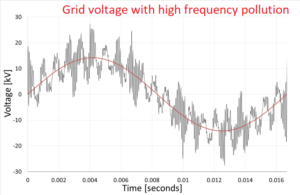The grid must become greener, better, faster, smarter, reliable. What does this energy transition mean for connecting underground medium voltage cables? What jointing technology performs best in the energy network of decentralised generation? Choosing the right medium voltage cable joint has never been so important.
The technologies for connecting cables vary quite a bit. You can choose a heat shrink technology in which you recover/ shrink the joint around the connector with a gas torch, a cold shrink technology in which the joint body shrinks by removing a spiral cord or ejects a hold out. Or a liquid insulation technology in which the connection is insulated in a housing with liquid silicone.
What does sustainability mean for the underground cable network?
The grid operators are responsible for the correct product choices for the electricity grid. The political objectives do not lie. We must hurry to make the grid more sustainable; fossil raw materials must make way for alternative energy generation such as solar and wind. But what does this sustainability mean for the current electricity grid?
Simply put: there is too much demand on the cable. The sustainable generated energy is distributed via the existing grid. This energy is generated locally, for example in a solar parks, wind farms or hydro generation. Feeding this energy into the cable network can cause issues: the electric currents move in opposite directions. Two-way traffic is created in the cables. In addition, transmissions are using this generated electricity to feed the energy network. Such controllers consist of high-frequency switching elements through which generates high-frequency harmonics in the network.
Harmonics are integral multiples of the normal frequency (50 Hz) They can lead to a variety of negative side effects such as thermal, mechanical, chemical and electrical, these are all interrelated. More information about the impact of harmonics can be found in our technical paper “The future challenges for cable accessories in medium voltage networks”.
What do thermal load and harmonics mean for medium voltage cable joints?
Networks contaminated with harmonics present an increased risk of partial discharges, also known as PDs. These partial discharges can seriously affect the XLPE insulation. A partial discharge is a lightning, “thunderstorm”, in a part of the insulation. Where lightning strikes, material is burned / eroded. An inhomogeneity arises. Partial discharges can damage cables and cable joints and lead to failures.
The traditional shrink joints are made of polymers. Partial discharges can occur, such as ‘electrical treeing at the interfaces and inhomogeneous areas. After a breakdown as a result of a partial discharge, the material is irreparably damaged, which can lead to a failure. Liquid silicone joints are self-healing after partial discharge in favour of a long service life. In addition, partial discharges are much less common because the liquid silicone fills all voids, so that the chance of air entrapment is minimal / non-existent.
Liquid silicone technology
Medium voltage cable joints based on the liquid silicone technology have even more sustainable advantages.
- Liquid silicone is hydrophobic and forms a perfect seal against any moisture ingress. An insulating rubber forms on contact with water or even high humidity.
- The dielectric properties of liquid silicone are equal or even better than those of polymeric cable.
- Installation is simple, fast and flame-free.
If you would like to know how best to protect your cable network, please contact one of our specialists. Or view our LoviSil® liquid silicone cable joints for medium voltage cables on the website.



